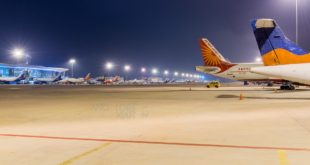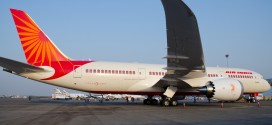Bangalore Aviation readers will recall our article last year highlighting the poor growth of air-side infrastructure at Indian airports.
This morning, the Director General and CEO of the International Air Transport Association (IATA), Alexandre de Juniac, called on the Indian government to address, on priority, infrastructure constraints that limit growth and government policies that impose excessive costs on aviation. IATA is an airline industry body representing some 290 airlines comprising 82% of global air traffic.
De Juniac was Speaking at the International Aviation Summit in New Delhi, which commemorates the approaching milestone of 50-straight months of double-digit domestic aviation growth in India. Indian aviation already supports about 75 lakh jobs and about 1.5% of GDP (₹3,000 crores). By 2037, India’s air passenger traffic is expected to treble.
Profitless growth
Indian airlines are suffering a double impact of a sliding Rupee and increasing fuel costs. Driven by excessive taxation, a lack of transparency, high airport fees, fuel makes up over 34% of operating costs compared to a global average of 24%.
This has resulted in what we at Bangalore Aviation call an era of “profitless growth”.
Air-side infrastructure priorities
While praising the upgrades in terminal infrastructure, De Juniac said infrastructure mustn’t be the choke point to fulfilling the needs of passengers. He called for immediate improvement in four priority areas:
- Develop a comprehensive and strategic masterplan for India’s airports. “The infrastructure issue is critical for India’s future. Band-Aid solutions will not do the job,” said de Juniac.
- Remove all obstacles to successfully opening Navi Mumbai as quickly as possible. Urgent relief is needed for Mumbai’s severe capacity bottleneck.
- Modernize airport processes using technology in line with global standards. The DigiYatra initiative will make a significant step in the right direction with digitally connected airports, passengers, systems and flights. In line with this, IATA encouraged the Indian government to support the broad implementation of IATA’s One ID initiative which uses biometric identification (similar to India’s Aadhar identity card) to save time by eliminating the need for repeated document checks in airports.
- Flexibly use military airspace to expand airspace capacity for civil operations. This was successfully demonstrated with the opening of a conditional airway through restricted airspace over Bhuj and should now be expanded to more areas.
For the new greenfield airports, De Juniac cautioned the government not to blindly chase high concession fees, highlighting bitter experiences in Brazil, Australia and other countries. .
Relaxing regulation
De Juniac called for the government and airports to align with global standards in reducing burdensome regulation which increases costs and decreases competitiveness. Using the high cost of aviation fuel as an example IATA called for
- Zero-rate GST for international travel in line with ICAO (International Civil Aviation Organisation) principles and international obligations.
- Create a more competitive market for jet fuel by:
- Adding aviation jet fuel to the GST framework with full input tax credit
- Removing fuel throughput fees in line with global best practice
- Creating competition with common-use open-access infrastructure
- Regulating transparency in pricing of jet fuel
- Reducing excise duty on fuel
Share your thoughts
As usual we invite you to share your thoughts via a comment on this article. Are De Juniac’s observations valid? Where do you see gaps in meeting needs? What do you feel needs to be done?
 Bangalore Aviation News, Reviews, Analysis and opinions of Indian Aviation
Bangalore Aviation News, Reviews, Analysis and opinions of Indian Aviation


